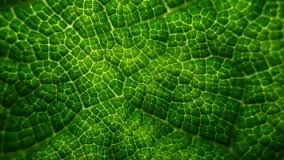Plants undergo photosynthesis in order to produce food from carbon dioxide and water. Plants pull carbon dioxide from the air around us and internally convert carbon dioxide molecules and water molecules into sugars which are stored in the plant and oxygen which is released back into the air. In essence, plants take carbon dioxide from the air and convert it into carbon compounds. It is estimated that plants across the world consume around 350 gigatons of carbon dioxide per year [1]. While this biological process is already efficient and evidently capable of removing massive amounts of carbon dioxide from the atmosphere, scientists at the Max Planck Institute of Terrestrial Microbiology in Marburg, Germany have devised a new biochemical mechanism for converting carbon dioxide into other, larger carbon compounds [2]. This new mechanism termed CETCH involves replacing an enzyme in the photosynthesis process with a faster and more efficient variant [2]. Thus, the newly developed mechanism is far more efficient than nature’s version, and early estimates point to the new process being around two to three times faster than natural photosynthetic processes [2]. So, what’s the point of making this carbon fixation process faster?
While there are several possible applications for this fast conversion of carbon dioxide, the most immediate impact this CETCH mechanism can have is environmental [1]. The vast majority of products we use on a day to day basis are produced with energy from burning fossil fuels. These fossil fuels are multi-carbon compounds and fossil fuel combustion is causing a mass buildup of carbon dioxide in the atmosphere. This CETCH mechanism, in essence, could function as an artificial leaf that can pull in carbon dioxide and prevent it from escaping into the atmosphere. While this is still relatively new in testing and practical application development, the possibilities of significantly reducing the environmental burden of carbon dioxide are promising. It is quite possible, that this mechanism could be implemented so that it acts as an artificial leaf capable of counteracting the tremendous carbon dioxide emissions of the modern world.
“counteracting the tremendous carbon dioxide emissions of the modern world”
References:
- Herkewitz, W. New Way of Transforming CO2 Better Than Plants Do. http://www.popularmechanics.com/science/energy/a23938/fix-carbon-dioxide-useful-products (accessed 11/18/16), part of Popular Mechanics.
- Schwander T, Borzyskowski LSV, Burgener S, Cortina N, Erb T. A Synthetic Pathway for the Fixation of Carbon in vivo. http://science.sciencemag.org/content/354/6314/900 (accessed 11/19/16), part of Science.


